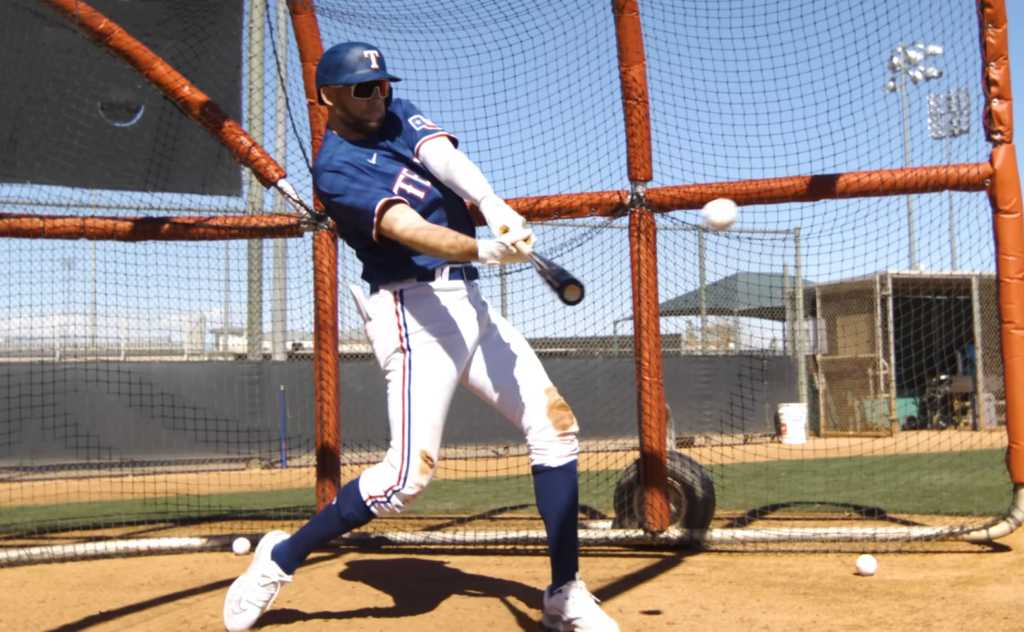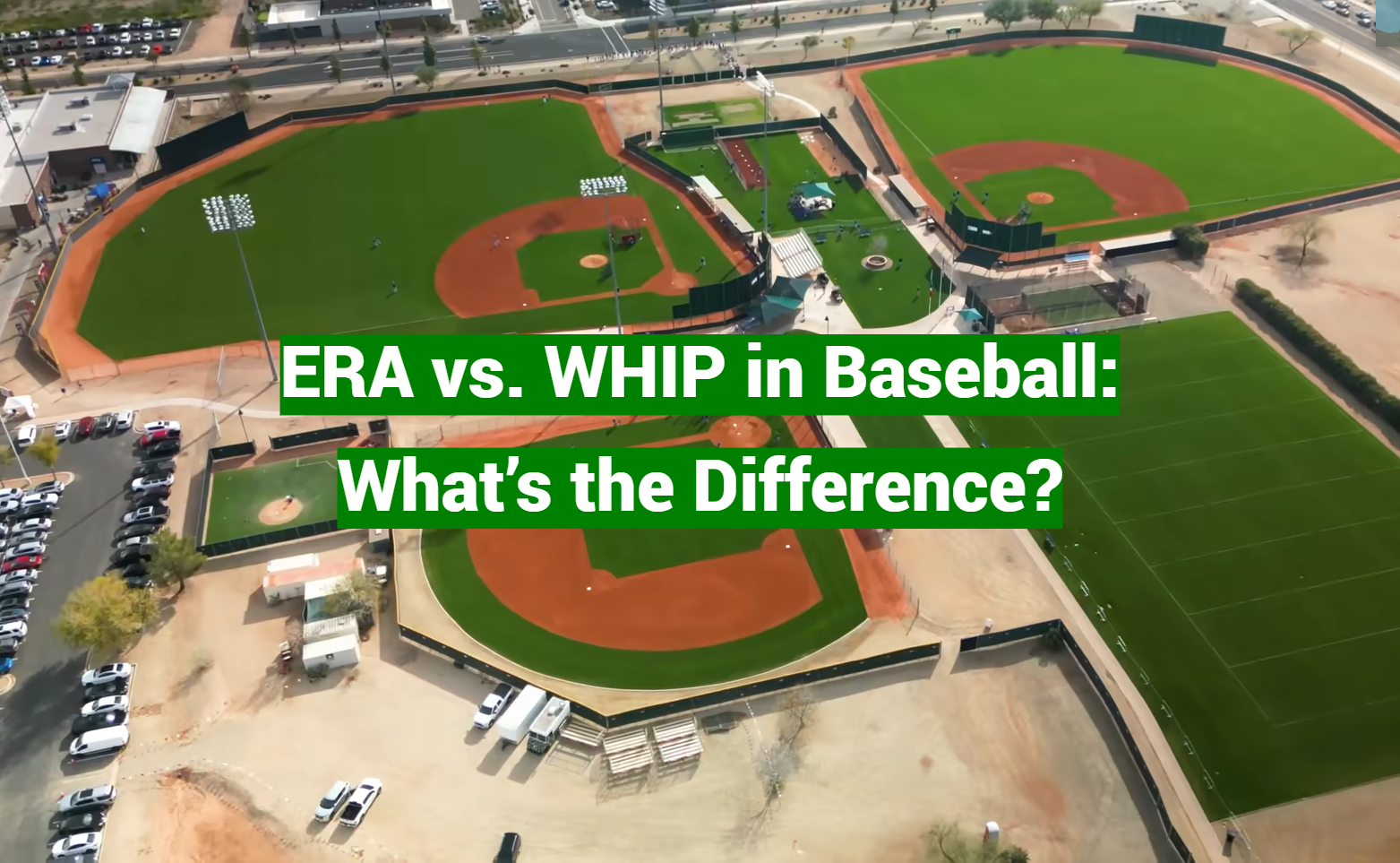In the intricate world of baseball statistics, ERA (Earned Run Average) and WHIP (Walks and Hits per Inning Pitched) stand out as pivotal metrics for gauging a pitcher’s performance. While both highlight a pitcher’s effectiveness, they offer distinct insights into their prowess on the mound. ERA zeros in on the average number of earned runs a pitcher allows over nine innings, a direct indication of the pitcher’s impact on the scoreboard.
WHIP, on the other hand, paints a broader picture of a pitcher’s control by tallying the average number of batters who reach base per inning. Understanding the nuances between these stats provides a deeper analysis of pitching success and strategy in baseball.
Table of Contents
The Importance of Baseball Statistics
Historical Perspective: The Birth of Baseball Statistics
The use of statistics in baseball dates back to the 19th century when Henry Chadwick, a pioneering baseball writer, introduced the box score in 1859 [1]. The box score provided a simple numerical representation of a game’s events, such as hits, runs, and errors. As the game grew in popularity, so did the need for more comprehensive statistics to assess player performance and team strategy.

Player Evaluation and Performance Analysis
For example, a player’s batting average may not tell the whole story, but when combined with on-base percentage and slugging percentage, it gives a more accurate representation of their offensive capabilities. Similarly, pitchers are not solely evaluated based on wins and losses; advanced metrics like Fielding Independent Pitching (FIP) offer a better understanding of a pitcher’s true effectiveness, independent of defensive support.
In-Game Strategy and Decision-Making
Baseball statistics are not only valuable for evaluating past performances but also for shaping in-game strategy. Managers and coaches use data to make informed decisions about lineups, defensive shifts, and pitching changes. Advanced analytics help teams exploit opponents’ weaknesses, optimize defensive alignments, and strategically deploy pitchers based on matchup data.
The rise of sabermetrics, a data-driven approach to baseball analysis, has revolutionized the game by challenging conventional wisdom and uncovering new insights. Teams now utilize data to determine optimal batting orders, bullpen usage, and defensive positioning, giving them a competitive edge in an ever-evolving sport.
Fan Engagement and Fantasy Baseball
Baseball statistics have also enhanced the fan experience. Fantasy baseball, a game where fans assemble imaginary teams based on real players’ statistics, has become immensely popular. Fans now engage with the game on a deeper level, tracking player performances, making strategic decisions, and competing against friends and fellow fans. The availability of real-time statistics through various platforms has brought fans closer to the action, allowing them to follow every at-bat, pitch, and defensive play with unparalleled detail.
Preserving Baseball History
Statistics serve as a historical record of the game, preserving iconic moments and immortalizing legendary players. Records such as Babe Ruth’s home run total, Joe DiMaggio’s hitting streak, and Nolan Ryan’s strikeout record are not just anecdotes but statistical milestones that contribute to the rich tapestry of baseball history. The statistical aspect of baseball ensures that each era is documented and celebrated, allowing fans to connect with the past and appreciate the evolution of the game.

What Is the WHIP Statistic:
In the intricate world of baseball statistics, WHIP stands out as a key metric for evaluating a pitcher’s effectiveness on the mound. WHIP, which stands for Walks plus Hits per Inning Pitched, is a valuable tool that provides insights into a pitcher’s control, ability to limit baserunners, and overall performance [3].
WHIP Records:
Before delving into the nuances of WHIP, it’s essential to acknowledge some of the notable records associated with this statistic. Throughout the history of baseball, legendary pitchers have etched their names into the annals of the game by achieving remarkable WHIP figures.
From Walter Johnson’s incredible 0.97 WHIP in 1913 to Pedro Martinez’s modern-era record of 0.74 in 2000, WHIP records showcase the mastery of pitchers in different eras [4]. Exploring these records not only highlights individual achievements but also provides a historical context for understanding the evolution of pitching excellence.
Benefits Of Using WHIP:
WHIP offers a comprehensive snapshot of a pitcher’s performance by taking into account both walks and hits, two critical components that can significantly impact the outcome of a game. Unlike traditional stats such as earned run average (ERA), which can be influenced by defensive errors, WHIP focuses solely on the pitcher’s ability to prevent baserunners. This makes it a more accurate measure of a pitcher’s control and efficiency on the mound.
Moreover, WHIP is a versatile statistic that can be used for both starters and relievers, allowing teams to assess the effectiveness of their entire pitching staff. Its simplicity makes it accessible to fans and analysts alike, serving as a quick reference point for evaluating a pitcher’s performance in a given game or over a season.
Drawbacks Of Using WHIP:
While WHIP provides valuable insights, it has its limitations. One of the main drawbacks is that it doesn’t consider the context of the hits or walks allowed. A pitcher might give up hits or walks that have minimal impact on the outcome of the game, especially if the defense is strong or if they occur in low-pressure situations. Additionally, WHIP doesn’t differentiate between earned and unearned runs, potentially overlooking a pitcher’s ability to bounce back from defensive errors.

How to Calculate a Pitcher’s WHIP?
Understanding how to calculate WHIP is fundamental for anyone looking to analyze or appreciate the performance of a pitcher. The formula is straightforward:
WHIP= Innings Pitched/Walks+Hits
This equation encapsulates the essence of WHIP by measuring the average number of walks and hits a pitcher allows per inning pitched. The lower the WHIP, the better the pitcher’s performance, indicating effective control and an ability to limit baserunners.
What Does WHIP Not Measure?
While WHIP provides a valuable overview of a pitcher’s control and efficiency, it doesn’t capture the entirety of a pitcher’s skill set. For instance, WHIP does not account for strikeout rates, a crucial factor in a pitcher’s ability to dominate opposing hitters. A pitcher who consistently strikes out batters may have a higher WHIP due to the potential for fewer balls in play, yet they could still be an integral part of a team’s success.
Additionally, WHIP doesn’t measure a pitcher’s ability to induce ground balls or pop-ups, factors that contribute to their effectiveness in specific situations. Therefore, using WHIP in isolation may not provide a complete picture of a pitcher’s overall impact on the game.
What Is a Good WHIP?
Determining what constitutes a “good” WHIP depends on various factors, including the era in which a pitcher played and the prevailing offensive environment. As a general guideline, a WHIP below 1.00 is considered outstanding, signaling elite control and the ability to keep opposing hitters at bay. A WHIP between 1.00 and 1.20 is solid, while anything above 1.20 may indicate room for improvement [4].
It’s crucial to contextualize WHIP within the broader landscape of baseball statistics and consider factors such as league averages and the pitcher’s role (starter or reliever). By doing so, fans and analysts can more accurately assess a pitcher’s performance relative to their peers.
Is WHIP A Good Indicator Of A Pitcher’s Success?
While WHIP is a valuable metric, it shouldn’t be viewed in isolation when evaluating a pitcher’s overall success. Success on the mound involves a combination of factors, including the ability to strike out batters, induce ground balls, and limit extra-base hits. A pitcher with a low WHIP may still struggle in high-leverage situations or against specific types of hitters.
To gain a more comprehensive understanding of a pitcher’s success, it’s essential to consider WHIP in conjunction with other advanced metrics like strikeout-to-walk ratio (K/BB), FIP (Fielding Independent Pitching), and situational statistics such as batting average against with runners in scoring position. This holistic approach provides a nuanced evaluation that goes beyond WHIP and reveals the intricacies of a pitcher’s performance.

Does WHIP Correlate to Wins?
While WHIP is a valuable indicator of a pitcher’s effectiveness, its direct correlation to wins is not always straightforward. Baseball is a team sport, and a pitcher’s success is influenced by various factors, including run support, defensive performance, and bullpen contributions. A pitcher with an outstanding WHIP may still experience a lack of offensive support, resulting in fewer wins.
To evaluate a pitcher’s impact on team success more comprehensively, it’s essential to consider a combination of statistics, team dynamics, and the overall context of the games they pitched. Wins and losses are team outcomes, and relying solely on WHIP to predict them oversimplifies the complex dynamics of baseball.
Best WHIP Pitchers of All Time:
Acknowledging the pitchers who have excelled in terms of WHIP throughout baseball history is an opportunity to celebrate the mastery of these individuals on the mound. From the dominating performances of Pedro Martinez and Clayton Kershaw to the consistency of Greg Maddux [5], examining the careers of pitchers with remarkable WHIP figures provides insights into the evolution of pitching excellence.
Understanding the historical context in which these pitchers achieved their exceptional WHIP figures allows fans to appreciate the impact these individuals had on the game and the challenges they faced during their respective eras.
What Is the ERA Statistic:
ERA, or Earned Run Average, is a fundamental statistic in baseball that measures a pitcher’s effectiveness by quantifying the average number of earned runs they allow per nine innings pitched. This essential metric provides a snapshot of a pitcher’s ability to prevent opposing teams from scoring runs while factoring in the duration of their outings.
ERA Records:
Throughout the storied history of baseball, the ERA statistic has witnessed remarkable achievements by legendary pitchers. From Bob Gibson’s astonishing 1.12 ERA in 1968 to Greg Maddux’s sustained excellence with four seasons below 1.60 in the 1990s [6], ERA records encapsulate the dominance and consistency of pitching greats across different eras. These records serve as benchmarks, highlighting the extraordinary feats accomplished by the game’s elite hurlers.
Benefits of Using the ERA Statistic:
- Easy Comprehension: ERA is a straightforward and easily understandable statistic for fans and analysts alike. It succinctly conveys a pitcher’s proficiency in preventing earned runs, offering a quick reference point for evaluating their overall performance;
- Team Success Indicator: ERA plays a significant role in determining a team’s success. Teams with pitchers boasting low ERAs tend to have a competitive edge, showcasing the correlation between effective pitching and positive outcomes for the team;
- Historical Relevance: ERA has stood the test of time and remains a timeless statistic that connects modern players with the rich history of the game. Comparing ERAs across different eras provides insights into the evolution of pitching styles and the changing nature of the sport;
Drawbacks of Using the ERA Statistic:
- Defensive Variability: ERA can be influenced by the quality of a pitcher’s defense. An outstanding defensive play can turn a potential earned run into an out, masking a pitcher’s true performance. Conversely, a defensive lapse can inflate a pitcher’s ERA, unfairly attributing runs to their record;
- Park Factors: The ballpark where a pitcher plays can impact their ERA. Some ballparks are hitter-friendly, leading to higher run-scoring environments, while others favor pitchers with lower scoring. Evaluating a pitcher solely based on ERA may not account for these external factors;
- Unearned Runs: ERA includes only earned runs, omitting unearned runs that result from defensive errors. While this exclusion helps in evaluating a pitcher’s individual performance, it may not provide a complete picture of their ability to handle pressure situations;

How to Calculate a Pitcher’s ERA?
Calculating a pitcher’s ERA involves a straightforward formula:
ERA = (Earned Runs/Innings Pitched) × 9
This formula standardizes the earned run count per nine innings, offering a metric that is easily comparable across pitchers with varying playing times [7].
What Does ERA Not Measure?
ERA, while a valuable metric, has limitations in capturing the entirety of a pitcher’s performance. It does not account for:
- Pitching Quality: ERA doesn’t distinguish between a pitcher allowing hard-hit balls or inducing weak contact. A pitcher may have a low ERA but still struggle in high-pressure situations or against specific types of hitters;
- Strikeout Rates: While ERA is influenced by strikeouts, it doesn’t explicitly measure a pitcher’s ability to overpower hitters. High strikeout rates can be indicative of a pitcher’s dominance, which may not be fully reflected in their ERA;
- Pitch Efficiency: ERA doesn’t consider the number of pitches a pitcher throws to complete an inning. A pitcher with a high pitch count per inning may face challenges in lasting deep into games, impacting their overall effectiveness;
What Is a Good ERA?
Determining what constitutes a “good” ERA depends on various factors, including the era in which a pitcher plays and the prevailing offensive environment. As a general guideline, an ERA below 3.00 is considered excellent, while an ERA between 3.00 and 4.00 is solid. Pitchers with ERAs above 4.00 may face scrutiny, though context is crucial, considering factors such as ballpark effects and defensive support [8].
Is ERA a Good Indicator?
ERA remains a fundamental indicator of a pitcher’s performance, providing a reliable measure of their ability to limit earned runs. However, it should not be viewed in isolation. Combining ERA with other advanced metrics, such as FIP (Fielding Independent Pitching) and xFIP (Expected Fielding Independent Pitching), offers a more comprehensive evaluation of a pitcher’s true skill set.
Does ERA Correlate to Wins?
While ERA strongly correlates with a team’s success, its direct correlation to a pitcher’s win-loss record is nuanced. A low ERA generally contributes to wins, but factors such as run support, defensive performance, and bullpen effectiveness influence a pitcher’s win-loss record [9]. Analyzing a pitcher’s impact on team success requires a holistic approach, considering various statistical measures and contextual factors.

Best ERA Pitchers of All Time:
Recognizing the pitchers who have excelled in terms of ERA provides a historical perspective on the evolution of pitching greatness. Icons like Sandy Koufax, Bob Gibson, and Pedro Martinez [10], who achieved extraordinary ERAs in their respective eras, showcase the enduring significance of this statistic. Exploring the careers of these pitchers allows fans to appreciate the mastery, consistency, and impact they had on the game.
WHIP vs ERA: Comparison
WHIP (Walks plus Hits per Inning Pitched):
Definition:
WHIP measures a pitcher’s ability to limit baserunners by calculating the average number of walks and hits they allow per inning pitched. It is a reflection of a pitcher’s control and efficiency in preventing opposing teams from advancing runners on the bases.
Strengths:
- Baserunner Prevention: WHIP is a direct indicator of a pitcher’s success in preventing walks and hits, which are crucial factors in minimizing scoring opportunities for the opposing team;
- Consistency: WHIP is relatively straightforward and consistent across different eras, providing a timeless metric for comparing pitchers from various periods in baseball history;
Limitations:
- Lack of Context: WHIP doesn’t consider the context of the hits or walks allowed. A hit in a low-pressure situation may not have the same impact as one in a high-leverage scenario;
- Ignores Defensive Factors: WHIP does not account for defensive plays that could impact the outcome of an inning, potentially overlooking a pitcher’s ability to induce ground balls or pop-ups [11];
ERA (Earned Run Average):

Definition:
ERA gauges a pitcher’s effectiveness by calculating the average number of earned runs they allow per nine innings pitched. It provides a broader perspective on a pitcher’s overall performance, including the impact of defensive plays and the ability to strand baserunners.
Strengths:
- Run Prevention: ERA directly measures a pitcher’s success in preventing runs, encompassing not only hits and walks but also accounting for the impact of errors and defensive plays;
- Contextualization: ERA provides a contextual understanding of a pitcher’s performance by incorporating the circumstances surrounding each run allowed, such as unearned runs resulting from errors;
Limitations:
- Defensive Variability: ERA can be influenced by the quality of a pitcher’s defense. A strong defense can mask a pitcher’s mistakes, while a weaker defense may unfairly inflate their ERA;
- Park Factors: The ballpark in which a pitcher plays can influence their ERA. Hitter-friendly parks may result in higher ERAs, while pitcher-friendly parks could contribute to lower ERAs [12];
Comparing WHIP and ERA:
Complementary Metrics:
- Preventing Runs (ERA) vs. Limiting Baserunners (WHIP): ERA provides a comprehensive view of a pitcher’s ability to prevent runs, while WHIP hones in on the prevention of walks and hits. Together, they offer a dual perspective on a pitcher’s overall effectiveness;
- Team Success Indicators: While both metrics contribute to team success, WHIP is more directly linked to preventing baserunners, while ERA provides a broader measure of a pitcher’s impact on runs allowed;
Holistic Evaluation:
- Contextual Analysis: Combining WHIP and ERA allows for a more nuanced evaluation of a pitcher’s performance. Analyzing the two metrics together helps to decipher whether a low ERA is a result of effective run prevention or a byproduct of exceptional control over baserunners;
- Pitcher’s Role: WHIP is applicable to both starters and relievers, offering a versatile measure of effectiveness. ERA, with its emphasis on earned runs, may provide additional insights into a starter’s ability to pitch deep into games and limit the damage caused by opposing hitters;
WHIP vs. ERA vs. Other Metrics
WHIP (Walks plus Hits per Inning Pitched):
Definition:
WHIP focuses on a pitcher’s ability to limit baserunners by calculating the average number of walks and hits they allow per inning pitched.
Strengths:
- Baserunner Prevention: WHIP is a direct measure of a pitcher’s success in minimizing walks and hits, essential in preventing scoring opportunities for the opposing team;
- Consistency: WHIP provides a consistent measure across different eras, allowing for timeless comparisons between pitchers [13];
Limitations:
- Contextualization: WHIP lacks context regarding the impact of hits and walks, not differentiating between low-pressure and high-leverage situations;
- Defensive Factors: WHIP does not consider defensive plays, potentially overlooking a pitcher’s ability to induce specific types of batted balls;

ERA (Earned Run Average):
Definition:
ERA calculates the average number of earned runs a pitcher allows per nine innings pitched, offering a broader perspective on their overall performance.
Strengths:
- Run Prevention: ERA provides a comprehensive measure of a pitcher’s success in preventing both earned and unearned runs;
- Contextualization: ERA incorporates the circumstances surrounding each run allowed, providing a contextual understanding of a pitcher’s performance;
Limitations:
- Defensive Variability: ERA can be influenced by the quality of a pitcher’s defense, potentially masking or inflating a pitcher’s true performance;
- Park Factors: The ballpark a pitcher plays in can impact their ERA, making direct comparisons challenging without considering external factors;
Other Key Metrics:
1. FIP (Fielding Independent Pitching):
Definition:
FIP focuses on a pitcher’s performance independent of fielding, concentrating on strikeouts, walks, and home runs allowed.
Strengths:
- Pitcher Control: FIP isolates a pitcher’s control over outcomes directly under their influence, providing a clearer picture of their individual performance;
Limitations:
- Defense Ignored: FIP excludes the impact of defense, potentially overlooking a pitcher’s ability to induce ground balls or pop-ups;
2. xFIP (Expected Fielding Independent Pitching):
Definition:
xFIP adjusts FIP by incorporating a normalized home run rate, offering an expected measure of a pitcher’s performance.
Strengths:
- Home Run Neutralization: xFIP addresses the variability in home run rates by using a league-average home run per fly ball rate;
Limitations:
- Assumes Average Home Run Rate: xFIP assumes a league-average home run rate, which may not be accurate for all pitchers [14];
3. K/BB (Strikeout-to-Walk Ratio):
Definition:
K/BB measures the ratio of strikeouts to walks, emphasizing a pitcher’s ability to overpower hitters while maintaining control.
Strengths:
- Dominance and Control: K/BB provides insights into a pitcher’s dual ability to strike out batters and limit walks;
Limitations:
- Does Not Consider Hits: K/BB does not account for hits allowed, potentially overlooking a pitcher’s ability to limit baserunners;

Comparing WHIP, ERA, and Other Metrics:
Evaluation:
- WHIP and ERA Integration: WHIP and ERA, when used together, provide a comprehensive overview of a pitcher’s control over baserunners and their overall impact on preventing runs;
- Advanced Metrics Contribution: FIP, xFIP, and K/BB offer deeper insights into specific aspects of a pitcher’s performance, allowing for a more nuanced understanding beyond traditional metrics;
Contextual Considerations:
- Defensive Impact: Considering the influence of defense is crucial when interpreting ERA, FIP, and xFIP, as it directly affects how runs are scored;
- Role Specificity: Certain metrics, like FIP, are more applicable to specific roles, such as relievers, where defense may have a lesser impact on their performance;
Should You Focus on WHIP or ERA?
The decision to focus on WHIP (Walks plus Hits per Inning Pitched) or ERA (Earned Run Average) depends on the specific aspects of a pitcher’s performance that you find most relevant to your analysis and the context in which you are evaluating them. Both WHIP and ERA provide valuable insights into a pitcher’s abilities, but they emphasize different aspects of their performance.
Here are some considerations to help you decide which metric to prioritize:
1) Focusing on WHIP:
- Baserunner Management: WHIP is particularly valuable if you want to assess a pitcher’s ability to control the number of baserunners, as it directly measures walks and hits per inning pitched;
- Short-Term Performance: WHIP can be useful for evaluating a pitcher’s performance in a specific game or short period. It provides a quick snapshot of how effectively a pitcher is limiting opposing teams from reaching base;
- Consistency Across Eras: WHIP tends to be more consistent across different eras of baseball, making it a reliable metric for comparing pitchers from various time periods;
- Versatility: WHIP is applicable to both starters and relievers, offering a versatile measure of effectiveness for pitchers in different roles;
2) Focusing on ERA:
- Run Prevention: If your primary concern is how well a pitcher prevents runs, ERA is the go-to metric. It includes not only the prevention of walks and hits but also the broader context of runs allowed;
- Long-Term Performance: ERA is beneficial for assessing a pitcher’s performance over a more extended period, such as a season or multiple seasons. It provides a comprehensive measure of their overall impact on the scoreboard;
- Contextual Understanding: ERA accounts for the context of each run allowed, distinguishing between earned and unearned runs. This can be crucial for evaluating a pitcher’s performance in different game situations;
- Impact of Defense: If you want to consider the impact of a pitcher’s defense on their performance, ERA is more suitable. It incorporates the influence of defensive plays and errors on the number of runs allowed;
3) Finding a Balance:
- Holistic Approach: Many analysts and teams prefer to use both WHIP and ERA in conjunction for a more comprehensive evaluation. This approach provides a nuanced understanding of a pitcher’s control over baserunners (WHIP) and their overall effectiveness in preventing runs (ERA);
- Advanced Metrics: Consider incorporating advanced metrics like FIP (Fielding Independent Pitching) and xFIP (Expected Fielding Independent Pitching) to further refine your analysis. These metrics focus on factors a pitcher can control, such as strikeouts, walks, and home runs, and can provide additional insights;
- Role-Specific Analysis: Depending on whether you are assessing a starter or a reliever, certain metrics may be more relevant. For example, FIP might be more applicable to relievers, while ERA could be a primary focus for starters;
WHIP, ERA and Modern Baseball Analytics
WHIP and ERA in Modern Baseball:
1. Traditional Foundation:
- Baseline Metrics: WHIP and ERA remain foundational metrics in evaluating pitchers. They provide a quick and accessible snapshot of a pitcher’s control over baserunners (WHIP) and their effectiveness in preventing runs (ERA);
- Fan and Media Accessibility: WHIP and ERA are metrics easily understood by fans and widely used in mainstream baseball discussions. Their simplicity makes them valuable tools for communicating a pitcher’s performance to a broader audience;
2. Modern Context:
- Integration with Advanced Metrics: Modern analysts often use WHIP and ERA in conjunction with advanced metrics to gain a more nuanced understanding of a pitcher’s skill set. While WHIP and ERA capture certain aspects, advanced metrics delve into more specific components of a pitcher’s performance;
- Contextual Analysis: Analysts consider WHIP and ERA within the context of external factors such as park effects, defensive shifts, and overall offensive environments. This contextualization helps paint a more accurate picture of a pitcher’s capabilities;
3. Advanced Metrics:
- FIP (Fielding Independent Pitching): FIP isolates a pitcher’s performance by focusing on outcomes they can control – strikeouts, walks, and home runs. It helps assess a pitcher’s true effectiveness, independent of defensive support;
- xFIP (Expected Fielding Independent Pitching): xFIP takes FIP a step further by normalizing a pitcher’s home run rate. This metric provides an expected measure of a pitcher’s performance, accounting for factors like luck and random variations in home run rates;
- K/BB (Strikeout-to-Walk Ratio): K/BB emphasizes a pitcher’s ability to strike out batters while maintaining control over walks. It’s a valuable metric for assessing a pitcher’s dominance and command;
4. Team Building and Strategy:
- Front Office Decision-Making: Front offices use a combination of WHIP, ERA, and advanced metrics to inform decisions on player acquisitions, trades, and contract negotiations. A holistic approach allows teams to identify undervalued pitchers and optimize their rosters;
- In-Game Strategy: Managers and coaches use a combination of traditional and advanced metrics to make strategic decisions during games. This includes bullpen usage, defensive shifts, and pitcher matchups based on advanced analytics;
5. Player Development:
- Individualized Training: Player development staff use a variety of metrics, including WHIP and ERA, to tailor training programs for pitchers. Advanced metrics help identify specific areas for improvement, leading to more targeted development strategies;
- Minor League Evaluation: Minor league performance is assessed using a combination of traditional and advanced metrics to project a player’s readiness for the major leagues;

WHIP and ERA in Fantasy Baseball
WHIP (Walks Plus Hits Per Inning Pitched):
1. Baserunner Management:
- Fantasy Impact: WHIP directly influences a fantasy team’s performance by affecting the number of baserunners a pitcher allows. A lower WHIP contributes positively to a team’s overall pitching statistics;
- Strategic Consideration: When evaluating pitchers for fantasy purposes, managers often target pitchers with a history of maintaining a low WHIP, as it reflects better control and the ability to limit opposing batters;
2. Weekly Matchup Considerations:
- Streaming and Start/Sit Decisions: Fantasy managers often consider a pitcher’s WHIP when making weekly decisions on whether to start or bench them. Favorable matchups against teams with lower on-base percentages may influence these decisions;
- Streaming Strategy: In daily or weekly leagues, streaming pitchers with favorable WHIP trends can be a strategic move to boost the team’s overall WHIP for that specific period;
3. Season-Long Impact:
- Cumulative Effect: Over the course of a season, a pitcher’s WHIP accumulates and contributes to the fantasy team’s overall performance. Managers aim to build a pitching staff with a collective WHIP that ranks well within their league;
- Category Management: In leagues where WHIP is a specific category, managers actively work to improve this metric, either through roster moves, trades, or strategic lineup decisions;
ERA (Earned Run Average):
1. Run Prevention:
- Fantasy Impact: ERA is a critical metric in fantasy baseball as it directly reflects a pitcher’s ability to prevent earned runs. Managers seek pitchers with lower ERAs to contribute positively to their team’s overall performance;
- Benchmark for Pitching Success: Pitchers with consistently low ERAs are highly valued in fantasy baseball, as they can positively impact the team’s standings in this category;
2. Weekly and Season-Long Strategy:
- Weekly Matchup Considerations: Similar to WHIP, ERA is often factored into weekly start/sit decisions. Fantasy managers evaluate the opposing teams and their hitters to make informed choices that minimize the risk of high ERAs;
- Season-Long Management: Throughout a season, a pitcher’s ERA contributes to the fantasy team’s cumulative performance. Managers actively seek to acquire and retain pitchers who consistently maintain low ERAs;
3. League-Specific Impact:
- Categorical Scoring Leagues: In leagues where ERA is a specific scoring category, managers strategically build and manage their pitching staff to excel in this area. Targeting elite pitchers with low ERAs becomes a priority;
- Head-to-Head Formats: In head-to-head fantasy baseball formats, managing ERA during specific weeks becomes crucial, as winning this category can contribute to overall success in weekly matchups;
Strategy for Fantasy Managers:
- Balancing Act: Successful fantasy managers strike a balance between building a roster with pitchers who excel in both WHIP and ERA. While some pitchers may specialize in one metric over the other, having a staff that performs well in both areas is ideal;
- Targeting Undervalued Pitchers: Fantasy managers often seek pitchers who may be undervalued due to fluctuations in WHIP or ERA that are perceived as temporary. Identifying buy-low opportunities can be a savvy move;
- Injury and Performance Trends: Monitoring injury reports and performance trends is crucial. A pitcher’s health and recent performance can significantly impact their WHIP and ERA, influencing fantasy decision-making;
- Streaming Strategy: In daily or weekly leagues, streaming pitchers strategically based on favorable matchups can help managers gain an edge in both WHIP and ERA. This requires a keen understanding of opposing lineups and ballpark factors;
- Utilizing Advanced Metrics: While WHIP and ERA provide fundamental insights, fantasy managers with a more analytical approach may also consider advanced metrics like FIP and xFIP to project future performance and identify potential breakout candidates;
FAQ:
1. What is the lowest single-season WHIP since 1908?
The lowest single-season WHIP (Walks and Hits per Innings Pitched) since 1908 was recorded by Dutch Leonard in 1914 with an incredibly low WHIP of 0.780.
2. Who created WHIP and why?
WHIP was created by writer Daniel Okrent in the late 1970s. He developed it as a statistical measure to evaluate a pitcher’s effectiveness at keeping batters off the bases, which wasn’t fully captured by traditional statistics such as ERA (Earned Run Average).
3. How can you use WHIP in sports betting?
In sports betting, WHIP can be used as a metric to gauge the performance and consistency of pitchers. Bettors often look at pitchers with a low WHIP when deciding which team has a better chance of winning a game, considering that fewer baserunners typically translate to fewer scoring opportunities.
4. Who has the lowest WHIP in MLB history?
The lowest career WHIP in MLB history belongs to Addie Joss, with a WHIP of 0.9678, accumulated over his career from 1902 to 1910.
5. What is the average WHIP in MLB?
The average WHIP in MLB varies by season, but it generally hovers around 1.30. It can fluctuate based on the overall offensive environment in the league.
6. Does WHIP include hit batters?
Yes, WHIP includes hit batters. It accounts for all the ways a pitcher can allow a batter to reach base, excluding fielding errors.
7. Why was WHIP created?
WHIP was created to provide a more comprehensive statistic than ERA for evaluating a pitcher’s ability to prevent batters from reaching base.
8. Who came up with the WHIP stat in baseball?
Daniel Okrent is credited with inventing the WHIP stat in baseball.
9. How is WHIP different from ERA?
WHIP measures how many runners a pitcher allows on base per inning via hits and walks, whereas ERA measures how many earned runs a pitcher allows per nine innings. WHIP focuses on all baserunners, while ERA is concerned with scoring.
10. Is 2.5 ERA good?
Yes, a 2.5 ERA is considered very good. It indicates that a pitcher allows, on average, only 2.5 earned runs every nine innings pitched.
11. Why is ERA per 9 innings?
ERA is calculated per nine innings because a standard professional baseball game is nine innings long. This standardization allows for comparing the performance of pitchers across different games and seasons.
12. Is a 4.50 ERA good?
A 4.50 ERA is around the league average or slightly below average in modern baseball. It’s not particularly good, but it’s also not necessarily poor, depending on the context of the era and the league’s offensive environment.
13. What is the best WHIP in baseball?
The best single-season WHIP in baseball is 0.78, achieved by Dutch Leonard in 1914. As for career WHIP, Addie Joss holds the record with 0.9678.
14. What is a WHIP used for?
WHIP is used to assess a pitcher’s ability to keep batters off the base paths. It is a useful tool for managers and analysts to determine a pitcher’s effectiveness.
15. Is a higher WHIP better?
No, a lower WHIP is better as it indicates that a pitcher is allowing fewer batters to reach base.
16. Who has the lowest WHIP in MLB history?
Addie Joss has the all-time lowest career WHIP in MLB history with a mark of 0.9678.
17. Is a 2.95 ERA good?
Yes, a 2.95 ERA is very good. It means a pitcher allows less than three earned runs per nine innings on average.
18. Is a 3.00 ERA good?
Yes, a 3.00 ERA is considered good for a pitcher, indicating effective performance in preventing earned runs.
Useful Video: What is a good ERA and WHIP in baseball?
References:
- https://community.hsbaseballweb.com/topic/era-and-whip-define-elite
- https://en.wikipedia.org/wiki/Walks_plus_hits_per_inning_pitched
- https://www.ryanweissbaseball.com/blogs/news/whip-vs-era
- https://www.reddit.com/r/baseball/comments/ttcwf/more_important_whip_or_era/
- https://www.baseballbible.net/what-is-whip/
- https://www.docsports.com/how-to-what-is-does/whip-baseball.html
- https://www.nations-baseball.com/whip-in-baseball/
- https://en.as.com/mlb/baseball-statistics-explained-what-is-ops-whip-era-obp-slg-etc-n-2/
- https://medium.com/@herbwest/utilizing-mlbs-era-and-whip-metrics-for-informed-sports-betting-ba51554e395a
- https://thedatajocks.com/what-is-whip-in-baseball/
- https://coachingkidz.com/what-is-whip-in-baseball/
- https://www.picksfortonight.com/what-is-whip-in-baseball/
- https://community.hsbaseballweb.com/topic/is-fip-any-better-than-era-or-whip
- https://www.baseballmode.com/what-is-a-good-whip-in-baseball/



Leave a Reply